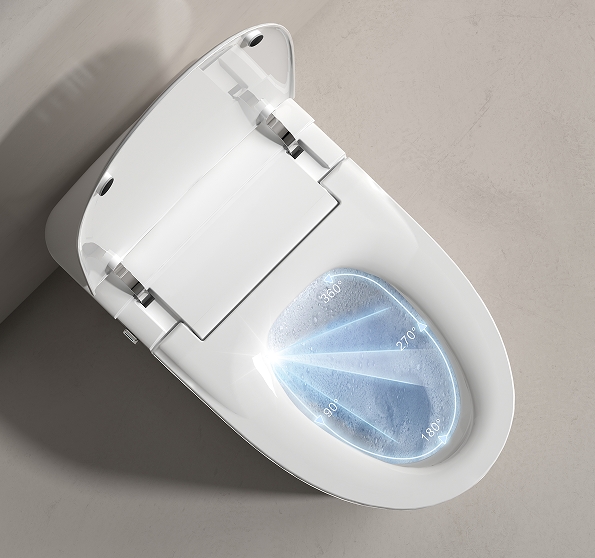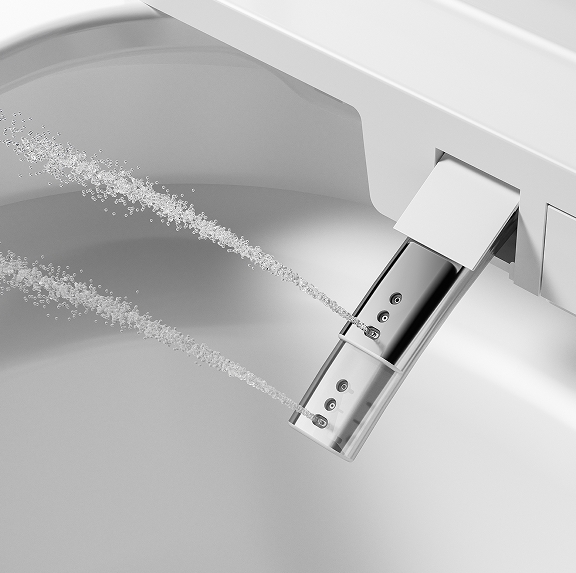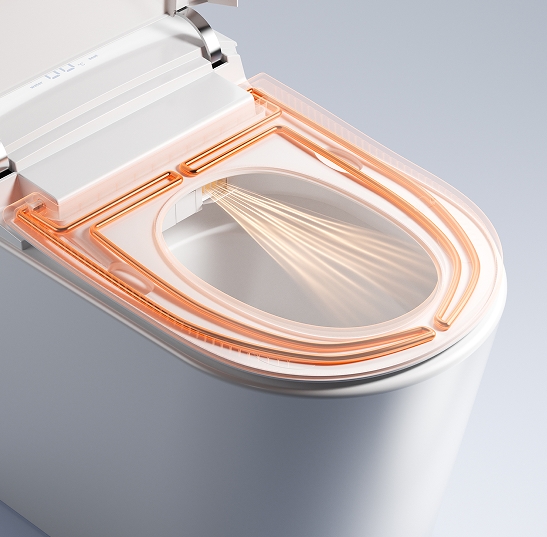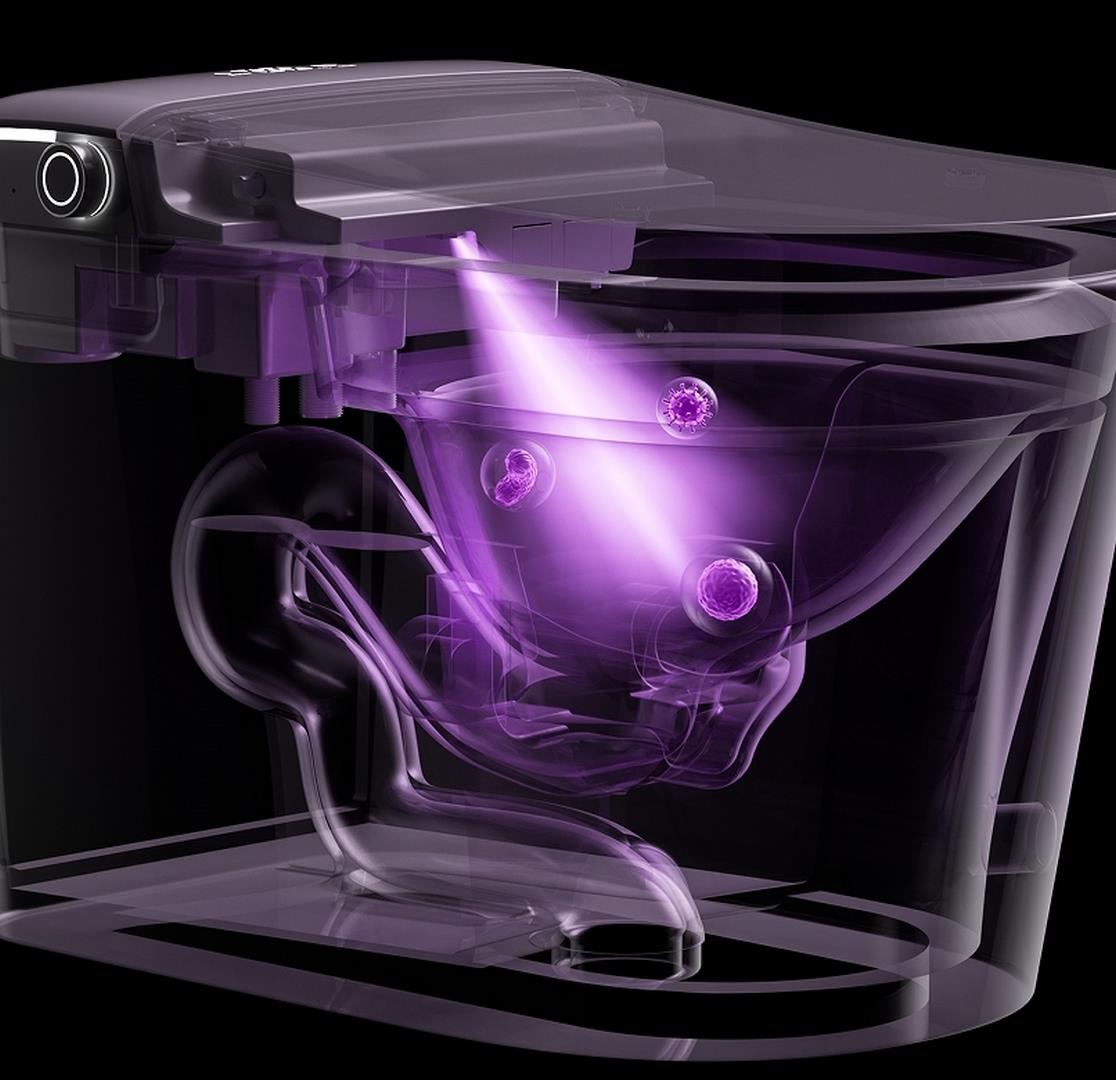In an era where innovation continually reshapes our daily routines, smart toilet bidet technology stands as a demonstration to how hygiene and technology can harmoniously coexist. Originating from humble beginnings, these advanced systems now offer unparalleled features, marrying luxury with sustainability. With functionalities such as tailored water settings and energy-efficient drying, smart bidets not only refine personal care but also address environmental concerns. Yet, as we embrace these modern marvels, questions arise about the technology driving them and their broader implications. What does the future hold for such innovations in personal hygiene?
The evolution of smart bidets represents a significant technological advancement in personal hygiene solutions, transforming a traditional bathroom fixture into a sophisticated, automated system.
Historically, bidets have been in use since the late 17th century in France, primarily as a standalone fixture. Early iterations required manual operation, limiting their widespread adoption. However, the technological surge in the late 20th century paved the way for integrating electronic controls, sensors, and heated water systems, thereby laying the foundation for today's smart bidets.
Cultural acceptance of bidets has varied across regions, with Western countries initially resistant due to historical sanitation norms and limited exposure.
However, as global awareness and environmental concerns have risen, the demand for more hygienic and eco-friendly bathroom solutions has increased, leading to a wider acceptance of bidets in households worldwide.
The smart bidet, with its advanced features, aligns with modern preferences for convenience and sustainability, further facilitating its integration into diverse cultural settings.

Download product catalog
Smart bidets encompass a multitude of advanced features and functions that cater to modern needs for hygiene, comfort, and efficiency. These devices are engineered with precision to enhance the user experience considerably. Key features include adjustable water temperature and pressure, which allow users to customize their cleansing preferences precisely.
Additionally, the inclusion of air dryers eliminates the need for toilet paper, further optimizing hygiene. Smart bidets also come equipped with heated seats and night lights, enhancing comfort and usability during nocturnal visits. The integration of deodorizing filters serves to maintain a fresh environment.
For those concerned with cleanliness, self-cleaning nozzles guarantee the device remains sanitary after each use. The installation process of smart bidets is designed to be user-friendly and efficient, requiring minimal effort and expertise.
Most models can be fitted to existing toilets without the need for extensive plumbing modifications, thereby facilitating a seamless conversion to smarter hygiene solutions. The intuitive control panels or remote controls facilitate ease of use, allowing users to navigate functions effortlessly.
Numerous benefits arise from the adoption of smart bidet technology, notably enhancing both hygiene and user convenience. A key advantage is the improved user experience, which is achieved through customizable settings that cater to individual preferences. Users can control water pressure, temperature, and spray patterns, promoting a tailored and comfortable cleansing process. This precision in customization not only enhances comfort but also considerably reduces water usage, leading to environmental advantages.
Smart bidets also offer substantial health benefits. The gentle cleansing action is particularly beneficial for individuals with sensitive skin or conditions such as hemorrhoids, reducing irritation compared to traditional toilet paper. Additionally, the reduction in toilet paper usage can lead to fewer blockages, promoting a healthier plumbing system.
Below is a table illustrating the main benefits of smart bidet technology:
| Benefit | Description | Impact |
| Hygiene | Superior cleansing compared to toilet paper | Enhanced cleanliness |
| User Experience | Customizable settings for personalized comfort | Improved satisfaction |
| Health Benefits | Reduced irritation for sensitive skin | Better skin health |
| Environmental Impact | Decreased toilet paper usage | Eco-friendly |
| Plumbing Efficiency | Fewer blockages due to less toilet paper | Reduced maintenance costs |
Thus, smart bidets not only improve personal hygiene but also contribute to environmental sustainability and plumbing efficiency.

Download product catalog
Building upon the advantages of smart bidets, understanding the technology behind smart toilets reveals the intricate systems that facilitate these benefits. At the core, smart toilets integrate advanced technologies to enhance hygiene and user experience. Key elements include smart sensors and user customization capabilities, forming the backbone of these innovative devices.
These technological advancements not only represent innovation but also provide users with the ultimate control over their bathroom experience, reflecting a significant leap from traditional toilet designs.
Smart toilet bidet technology presents significant potential for environmental benefits by reducing water consumption and minimizing toilet paper usage.
Traditional toilets typically use large volumes of water per flush, while bidet systems can decrease this demand by providing efficient cleansing options.
Additionally, reducing reliance on toilet paper not only conserves trees but also decreases the energy and resources required for its production and distribution.
A notable aspect of bidet technology is its potential to drastically reduce water consumption, thereby lessening the environmental impact of traditional toilet systems. The integration of advanced water saving mechanisms and eco friendly designs in modern bidets plays an essential role in promoting sustainable bathroom practices.
Bidets are engineered to utilize considerably less water compared to conventional toilets, achieving this through several innovative features:
These features collectively guarantee that smart toilet bidets are not only a hygienic option but also a responsible choice for the environment, aligning with the growing demand for sustainable solutions.

Download product catalog
The environmental advantages of smart toilet bidet technology extend beyond water conservation, greatly impacting the reduction of toilet paper usage. By integrating advanced cleansing systems, bidets provide a viable toilet paper alternative that aligns with sustainable hygiene practices.
This technology employs precise water jets to guarantee cleanliness, thereby diminishing the dependency on paper products. The production and disposal of toilet paper contribute notably to deforestation, water pollution, and landfill accumulation. Smart bidets offer a solution that mitigates these environmental concerns by considerably reducing paper demand and waste.
From a technical perspective, the efficiency of smart bidet systems surpasses traditional methods, providing users with an immediate and effective cleansing experience. The adoption of bidet technology reduces the frequency and volume of toilet paper consumption, which in turn minimizes the carbon footprint associated with its manufacture and distribution.
Additionally, the integration of features such as air dryers and adjustable water pressure settings enhances user experience while supporting environmentally conscious habits.
Selecting the appropriate smart toilet bidet model necessitates a careful evaluation of various features, including water temperature control, adjustable spray patterns, and user-friendly interfaces.
Equally important is aligning these features with budget constraints, as models range from basic to highly advanced systems.
When choosing a smart toilet bidet, several critical features demand careful consideration to guarantee ideal functionality and user satisfaction. A meticulous examination of these aspects can considerably enhance the user experience and streamline the installation process.
To assist in selecting the appropriate model, consider the following features:
Maneuvering the landscape of budget-friendly smart toilet bidets necessitates a strategic approach to balance cost-efficiency with essential features. As consumers, the priority is procuring affordable models without compromising on core functionalities like adjustable water temperature, pressure settings, and nozzle positions. These elements guarantee optimal hygiene and comfort, making them indispensable in any selection process.
When selecting an affordable bidet, it is vital to evaluate the model's compatibility with existing plumbing systems and its energy consumption, confirming it aligns with sustainable practices. Entry-level models often provide essential features such as dual nozzles for front and rear cleansing, warm air dryers, and self-cleaning mechanisms, offering a thorough hygiene experience.
Cost-conscious buyers should also assess the durability and warranty conditions of these models. A robust warranty can signify the manufacturer's confidence in the product's longevity and reliability.
Brands known for quality yet affordable models include TOTO, BioBidet, and Brondell, each offering varying levels of sophistication in their entry-level bidets.
As we look toward future trends in smart hygiene, the integration of advanced technologies into smart toilet bidet systems presents a significant evolution in personal hygiene management.
Sensor integration and user customization are at the forefront of these advancements, enabling users to precisely tailor their hygiene experience to their individual preferences and health needs. The incorporation of sensors can provide real-time data on water usage, pressure settings, and even user behavior patterns, allowing for a highly personalized and efficient hygiene routine.
These advancements promise to redefine hygiene standards, offering users enhanced control over their personal cleanliness and contributing to overall well-being.

Download product catalog
Smart toilet bidets enhance personal hygiene by ensuring precise water application, promoting water efficiency. They offer customizable settings for temperature and pressure, elevating user comfort and reducing reliance on toilet paper, thereby minimizing irritation and enhancing cleanliness.
A staggering 70% of smart toilet installations require both plumbing considerations and electrical requirements. Proper water supply and drainage are essential, alongside a dedicated power outlet, ensuring seamless functionality and user control over advanced bidet features.
Smart toilet bidets can be integrated into smart home systems, enhancing user convenience and control. Bidet compatibility with home automation depends on the model's connectivity features, ensuring seamless operation within the existing smart home integration framework.
Smart toilet bidets require a regular cleaning schedule to guarantee peak performance and hygiene. Adhering to manufacturer guidelines for maintenance, including specific repair tips, can prevent malfunctions and extend the lifespan of the device, assuring reliability and efficiency.
Smart toilet bidets, hitting the nail on the head, enhance user experience by offering customized cleaning settings tailored to individual preferences. These features maximize user comfort and provide precise control over water pressure, temperature, and spray patterns.
The integration of smart toilet bidet technology exemplifies a pivotal advancement in hygiene, driven by sophisticated electronic systems. This evolution not only enhances user comfort through features like adjustable water temperature and self-cleaning nozzles but also minimizes environmental impact by reducing toilet paper consumption. Investigating the theory that increased adoption of such technologies can lead to significant ecological benefits reveals a promising potential for sustainable sanitation practices, positioning smart bidets as a key solution in the future of eco-friendly and health-conscious bathroom innovation.